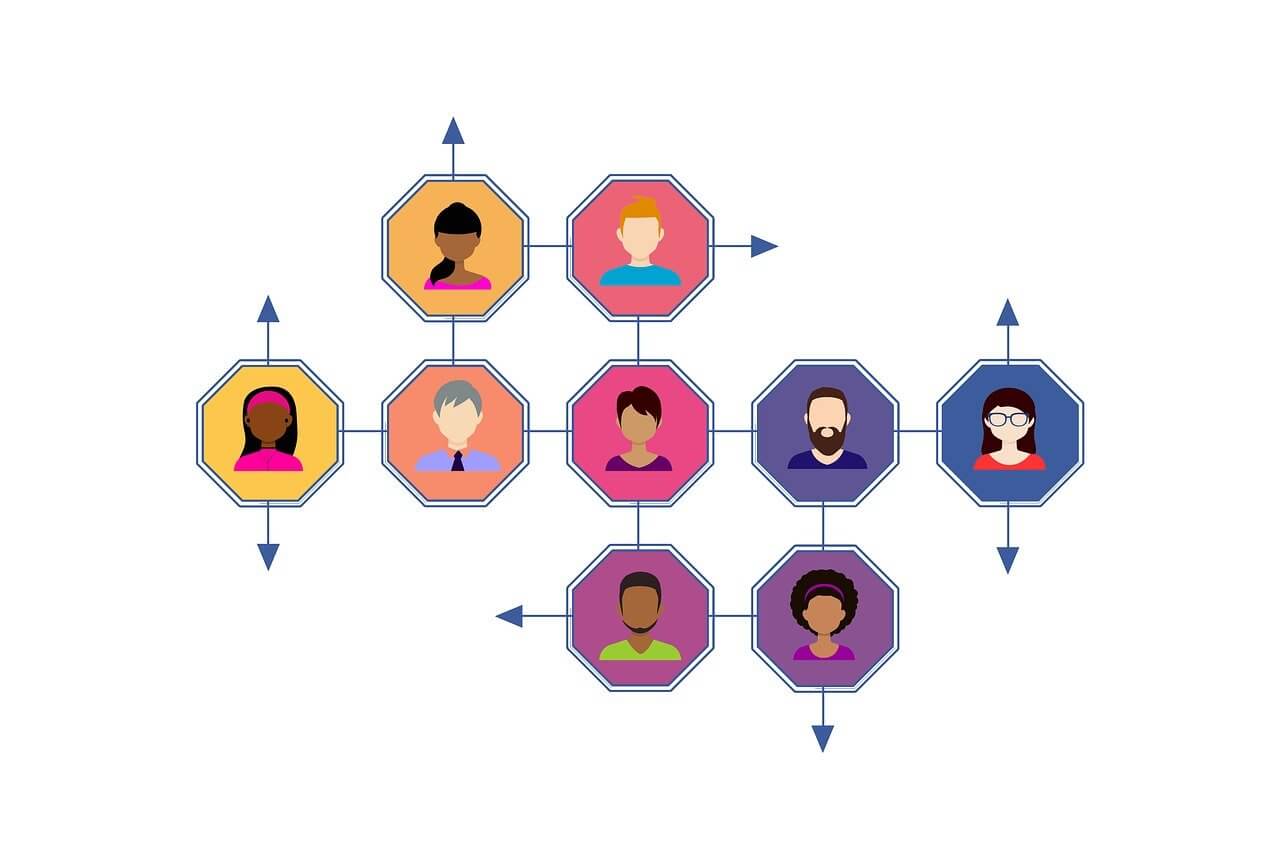Are you a business owner looking to stay ahead of your competitors? Then it’s time to start thinking about how to integrate AI into your business operations. AI is no longer just a futuristic concept – it’s here and transforming how businesses work.
From automating repetitive tasks to providing valuable insights. AI has the power to streamline your processes, boost your productivity, and give you a major competitive edge. But integrating this new technology into your business can feel overwhelming. Where do you even start?
Don’t worry, that’s what this blog post is all about. We are going to walk you through a step-by-step guide on how to seamlessly incorporate AI into your business. By the end, you’ll have a clear action plan to make AI work for you.
READ ALSO: How AI Technology is Reshaping the Workforce
How to Integrate AI into Your Business
1. Assess Your Needs
The first step is to take a good, hard look at your business. What are your biggest pain points? Where are you spending the most time and resources? These are the areas where AI can make the biggest impact.
Maybe you’re drowning in administrative tasks like data entry and scheduling. Or perhaps your customer service team is struggling to keep up with inquiries. AI can automate these types of repetitive, time-consuming jobs, freeing up your employees to focus on more strategic, high-value work.
On the other hand, you might be looking to gain more insights into your customer behavior or optimize your marketing campaigns. AI-powered analytics and predictive modeling can provide those data-driven insights to help you make smarter business decisions.
The key is to identify the specific problems you want to solve. Don’t just implement AI for the sake of it. Take the time to understand where you can benefit the most from this powerful technology.
2. Evaluate Your Data
Once you know what challenges you want to tackle with AI, the next step is to evaluate the data you have access to. After all, AI is only as good as the information it’s trained on.
Think about the type of data you currently collect – things like sales figures, customer information, website analytics, etc. Is it clean, well-organized, and easily accessible? Or is it scattered across multiple systems and riddled with inconsistencies?
AI models thrive on high-quality, comprehensive data. If your data is messy or incomplete, you’ll need to invest time and resources into cleaning it up before you can effectively leverage AI. This might involve consolidating your data into a centralized repository, standardizing your formats and definitions, and filling in any gaps.
Don’t be discouraged if your data isn’t perfect right now. Many businesses struggle with data management. The important thing is to start tackling it head-on. Work with your IT team or bring in a data analytics expert to help you get your data AI-ready.
READ ALSO: How To Utilize Data Analytics to Improve Your Marketing
3. Choose Your AI Solutions
With your needs and data in order, it’s time to start exploring the different AI solutions out there. This is where things can get a bit overwhelming – there are so many options to choose from. But don’t worry, we’re here to help you navigate it.
The first decision you’ll need to make is whether to build your custom AI solution or leverage pre-built tools and platforms. Building from scratch gives you more flexibility and control, but it also requires a lot more time, resources, and technical expertise. Pre-built solutions, on the other hand, are generally more plug-and-play, but they may not be as tailored to your specific business requirements.
Some popular AI platforms and services to consider include:
– Microsoft Azure Cognitive Services
– Amazon Web Services AI/ML
– IBM Watson Studio
– Salesforce Einstein
– HubSpot’s AI tools
Each of these offerings has its strengths and features, so spend some time evaluating which one(s) best fits your needs and budget. Don’t be afraid to try out a few different options – many providers offer free trials or low-cost entry points to get you started.
You’ll also want to think about the specific AI capabilities you want to implement. Do you need help with natural language processing for chatbots? Computer vision for image recognition? Predictive analytics to forecast future trends? Make a list of the AI functionalities that align with your business goals.
4. Assemble Your AI Team
Alright, now that you’ve got your AI game plan in place, it’s time to start building out your team. To successfully integrate AI into your business is not a one-person job – you’ll need to assemble a cross-functional group of experts to make it happen.
At the bare minimum, you’ll want to have:
– An AI/ML engineer or data scientist to handle the technical implementation and model development
– A business analyst or subject matter expert to provide domain knowledge and translate business requirements
– A change management lead to oversee the organizational adoption and training
Depending on the scope of your AI initiatives, you may also need to bring in:
– A data engineer to manage data pipelines and infrastructure
– A UX designer to create intuitive AI-powered interfaces
– A project manager to coordinate the various workstreams
The key is to find people who not only have the right technical skills but also understand how to apply AI in a way that solves real business problems. Look for team members with a blend of hard and soft skills – they need to be both AI-savvy and business-savvy.
Don’t have all these roles in-house? No problem! You can always supplement your internal team with external AI consultants or outsourced service providers. The important thing is to assemble the right mix of talent to drive your AI strategy forward.
5. Start Small and Experiment
Alright, you’ve done all the prep work – now it’s time to actually integrate AI into your business. But don’t try to tackle everything at once. The best approach is to start small and experiment.
Pick one or two high-impact use cases that you identified earlier and focus on those first. This could be automating a specific administrative task, building a customer service chatbot, or using predictive analytics to optimize your marketing campaigns.
The goal here is to prove the value of AI and get some quick wins under your belt. Once you’ve demonstrated the benefits, you can start scaling up to more complex, enterprise-wide AI initiatives.
As you launch these initial AI projects, make sure to closely monitor the results. Track key performance indicators like time savings, productivity gains, or customer satisfaction improvements. This data will help you justify further investment in AI and secure buy-in from leadership.
It’s also important to be agile and embrace a test-and-learn mindset. Don’t be afraid to experiment, fail fast, and iterate. AI is a powerful technology, but it’s not perfect – you’ll need to fine-tune your models and approaches based on real-world feedback.
6. Address Change Management
Here’s the thing about AI – it’s not just a technological change, it’s an organizational change. Integrating this new technology into your business is going to impact your employees, your processes, and your culture. And if you don’t properly manage that change, you’ll run into some serious roadblocks.
One of the biggest challenges you’ll face is employee resistance. Some of your team members may be skeptical of AI or worried that it will replace their jobs. It’s crucial to get in front of these concerns and help your people understand how AI can empower them to do their jobs better, not make them obsolete.
Start by clearly communicating the benefits of AI and how it aligns with your overall business strategy. Emphasize how it will free up their time from mundane tasks, allowing them to focus on more strategic, high-value work. Provide training and support to help them develop the skills needed to work alongside AI systems.
You should also establish clear policies and governance around the use of AI within your organization. Who will have access to the AI tools? How will decisions be made? What safeguards are in place to ensure ethical and responsible use? Get your employees involved in shaping these guidelines so they feel a sense of ownership.
Finally, don’t underestimate the importance of company culture. Integrating AI successfully requires a culture that embraces innovation, collaboration, and continuous learning. Work on cultivating those mindsets and behaviors across your organization.
Change is never easy, but with the right approach, you can overcome the human challenges of AI integration. Focus on clear communication, training, and cultural shifts – and you’ll set your team up for success.
READ ALSO: What Are the Best AI Tools in Digital Marketing?
7. Measure and Optimize
You’ve launched your initial AI projects, you’ve got your team on board, and now it’s time to start seeing the results. But the work doesn’t stop there. Continuous monitoring and optimization are crucial to getting the most out of your AI investments.
Start by defining the key performance indicators (KPIs) you want to track. These will vary depending on your specific use cases, but some common AI-related metrics include:
– Task automation rates
– Error reduction percentages
– Customer satisfaction scores
– Lead conversion rates
– Forecast accuracy
Regularly review these KPIs to understand how your AI systems are performing. Where are they exceeding your expectations? Where are there opportunities for improvement? Use these insights to fine-tune your models, tweak your processes, and make data-driven decisions.
It’s also important to continuously monitor for any unintended consequences or biases in your AI systems. These technologies are powerful, but they’re not infallible. Work closely with your AI team to conduct regular audits and testing to ensure your models are behaving ethically and equitably.
Finally, don’t be afraid to evolve and expand your AI initiatives over time. As your organization gets more comfortable with the technology and realizes the benefits, look for new ways to apply it. Identify additional pain points that AI can solve, or explore ways to integrate your AI systems across different business functions.
The key is to treat AI as an ongoing, iterative process – not a one-and-done project. With the right mindset and approach, you can continuously optimize and scale your AI capabilities to drive long-term business value.
READ ALSO: How to Leverage Email Marketing for Maximum Impact
Conclusion
To successfully Integrate AI into your business might seem daunting, but if you follow this step-by-step guide, you’ll will harness the power of this transformative technology.
You can start small, experiment, and build momentum. Don’t try to boil the ocean all at once. Focus on high-impact use cases, get your team on board, and continuously measure and optimize your AI efforts.
Above all, embrace the mindset of an AI-first organization. This technology will only become more prevalent and important in the years to come. The businesses that lean into it and figure out how to make it work for them will be the ones that come out on top.







